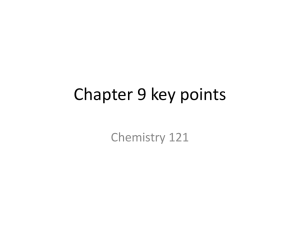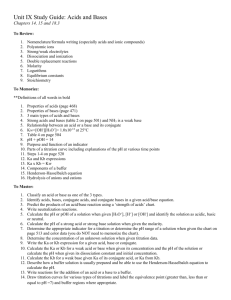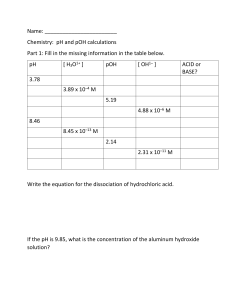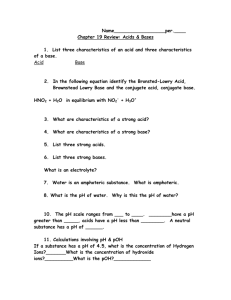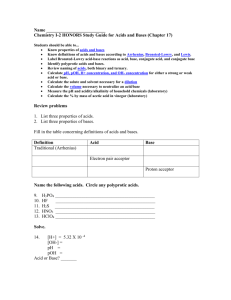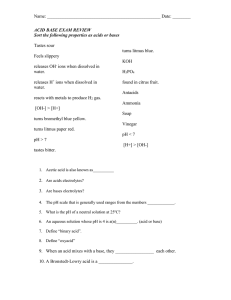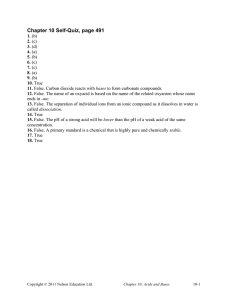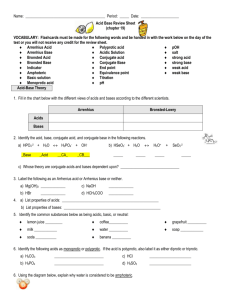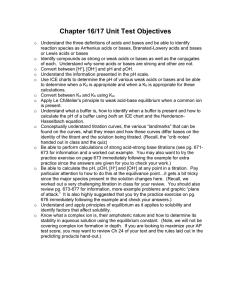Acids, Bases, and Buffers Review Topics
advertisement
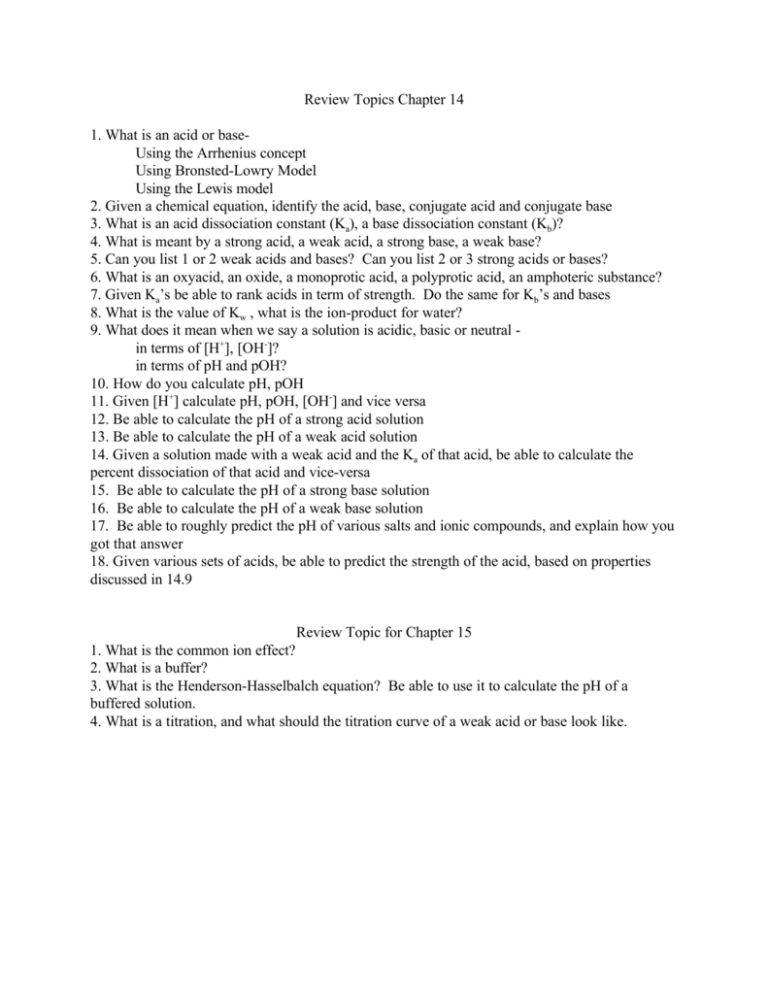
Review Topics Chapter 14 1. What is an acid or baseUsing the Arrhenius concept Using Bronsted-Lowry Model Using the Lewis model 2. Given a chemical equation, identify the acid, base, conjugate acid and conjugate base 3. What is an acid dissociation constant (Ka), a base dissociation constant (Kb)? 4. What is meant by a strong acid, a weak acid, a strong base, a weak base? 5. Can you list 1 or 2 weak acids and bases? Can you list 2 or 3 strong acids or bases? 6. What is an oxyacid, an oxide, a monoprotic acid, a polyprotic acid, an amphoteric substance? 7. Given Ka’s be able to rank acids in term of strength. Do the same for Kb’s and bases 8. What is the value of Kw , what is the ion-product for water? 9. What does it mean when we say a solution is acidic, basic or neutral in terms of [H+], [OH-]? in terms of pH and pOH? 10. How do you calculate pH, pOH 11. Given [H+] calculate pH, pOH, [OH-] and vice versa 12. Be able to calculate the pH of a strong acid solution 13. Be able to calculate the pH of a weak acid solution 14. Given a solution made with a weak acid and the Ka of that acid, be able to calculate the percent dissociation of that acid and vice-versa 15. Be able to calculate the pH of a strong base solution 16. Be able to calculate the pH of a weak base solution 17. Be able to roughly predict the pH of various salts and ionic compounds, and explain how you got that answer 18. Given various sets of acids, be able to predict the strength of the acid, based on properties discussed in 14.9 Review Topic for Chapter 15 1. What is the common ion effect? 2. What is a buffer? 3. What is the Henderson-Hasselbalch equation? Be able to use it to calculate the pH of a buffered solution. 4. What is a titration, and what should the titration curve of a weak acid or base look like.

